There are no doubt some strong arguments for other years being the best in automotive history.
But, we still haven’t heard any that move us off of the position that 1969 was, and remains, the single greatest year in auto-manufacturing history. The vehicles that came out of Detroit, MI alone is a who’s-who of legendary American muscle and steel.
Welcome to 2019—the 5oth anniversary of that magical year in automotive performance and motorsports history.
And to commerate the 50th anniversary, we’re going to do what we always do—ask you to make impossible choices and choose between the best of the best. We’ve identified eight titans from model year 1969. Some of you will no doubt feel we’ve done some deserving car a gross injustice by not including it on this list.
WE AGREE WITH YOU. We promise.
This is like being asked which of your kids you like the most. It’s neither fair nor reasonable. But. It is kind-of fun.
So join us.
Which is the greatest of the famed 1969 American muscle car lineup?
Yenko Nova SC427
“If you have to ask why anyone would shove a 427 into a Nova, we can’t be friends,” wrote Road & Track‘s Zach Bowman.
We feel you, Zach.
The ’69 Yenko Nova was the lightest in the famed Yenko 427 lineup and also the hairiest. This missile could go 0-60 in five seconds. Only 38 of these 425-horsepower beasts were built. That’s bad news for performance junkies—and probably good news for society at large. The L72 engine had 11.0:1 compression.
There are only 10 originals left, according to what we could find on the internet. One sold at a Mecum auction in January 2015 for $380,000.
…
AMC Hurst SC/Rambler
The AMC Hurst SC/Rambler brought together fun and fast like no other car of its era. From the unforgettable “AIR” lettering on the hood scoop to the distinctive 390 Cu. In. label on the hood, the Hurst SC/Rambler and its patriotic paint scheme (both Type A and Type B) were unmistakable. So was its performance.
A combination of 390 cubic inches of big block power and just 3,100 pounds made it a formidable track star. Just 1,512 Hurst SC/Ramblers were made, and model year 1969 was the only year that they were.
…
COPO Camaro ZL-1
Extremely rare and highly powerful, the Camaro ZL1 is considered by most Chevrolet enthusiasts to be the holy grail of the popular Camaro line.
Code name: COPO 9560.
The nasty ZL-1 Camaro’s all-aluminum 427-cubic-inch L-88 engine was rated at 435 horsepower (although many experts say it actually made more than 500 horses), yet weighed about the same as a small block 327.
Although they were barely street cars, they were backed by a 5-year/50,000-mile warranty.
…
1969 Dodge Charger R/T
Enter the 1969 Dodge Charger R/T.
The R/T was the baddest and sportiest ’69 Charger available, but it took some time for it to enter the scene. When Dodge released the 1969 Charger, it released a 225 cubic-inch Slant Six version, and the meatier 318 cubic-inch V8 (a much more popular option).
But THEN, Dodge unleashed a couple of mid-year Scat Pack offerings to the delight of performance enthusiasts for the rest of time: the Coronet Super Bee and the now-legendary Dodge Charger R/T.
The R/T was powered by the Magnum 440 cubic-inch, four-barrel carbureted V8, and made 375 horsepower. The car featured a TorqueFlite automatic transmission, a heavy-duty braking system, and dual exhaust with chrome tips.
Of course, much of the reverence muscle car enthusiasts pay the ’69 Charger can be traced to its time as the General Lee driven by Bo and Luke Duke in the wildly popular “Dukes of Hazzard” television series.
According to The Illustrated Directory of Muscle Cars, the TV show’s producers wrecked more than 1,500 Chargers filming stunts for that show.
…
1969 Oldsmobile Hurst/Olds 455
The Hurst/Olds showed up for model year 1968, but everyone fell extra in-love with the 1969 version, when the silver and black paint scheme was replaced by the iconic Firefrost gold-on-white paint scheme now synonomous with the Hurst/Olds name.
The car, based on the Oldsmobile 4-4-2, was powered by a 455 c.i.d. Rocket V8 engine rated at 380 hp and 500 ft.-lbs. of torque. Just over 900 Hurst/Olds were built for 1969.
…
1969 Plymouth Road Runner
According to The Illustrated Directory of Muscle Cars, Plymouth’s goal for 1968 was to offer a car that could go 100 miles-per-hour in the quarter-mile for less than $3,000. And that’s what they did.
Chrysler expected to sell about 20,000. It sold more like 45,000, and was behind only the Pontiac GTO and the Chevy Chevelle SS 396 in muscle car sales.
Fast forward to 1969, and—voila—we meet the glorious 1969 Plymouth Road Runner. The Road Runner came standard with a sporty 383 cubic-inch (6.3L), 335-horsepower V8. You could also get this Mopar legend with a 426 HEMI, and at the mid-year, the 440 Six Pack package became available, showcasing a 440 V8 with three Holley two-barrel carbs, steel black wheels with no hub caps or covers, a black fiberglass hood with four hood pins and a functioning hood scoop.
The 440 Six Pack made 390 horsepower and 490 ft.-lbs. of torque (at a lower engine speed than the HEMI).
Plymouth paid $50,000 to Warner Bros. for the rights to use the Road Runner and Wile E. Coyote names and likeness from the popular cartoon, and invested thousands to develop a horn that approximated the famous Warner Bros. Road Runner’s “beep-beep” sound.
The 1969 Plymouth Road Runner was named Motor Trend’s “Car of the Year,” which, when you consider the company, is no small thing.
…
1969 Pontiac GTO “The Judge”
There’s no shortage of car enthusiasts who consider the Goat, the G.O.A.T. (Greatest of All Time). But which one?
The 1964 Pontiac GTO is widely considered the first true American muscle car to birth the movement for the remainder of the 1960s, and into the early ‘70s, and is revered for that reason.
The 1965-67 GTOs are gorgeous and wildly popular with collectors and hot-rodders. 1968 ushered in the Goat’s second generation and was named Car of the Year.
And then 1969 happened. Pontiac unleashed “The Judge.”
For an extra $332 over the price of a standard GTO, the Judge came equipped with Ram Air III induction (and later, Ram Air IV for a higher price) feeding a 400 cubic-inch HO (high-output) V8, three-speed gearbox, Rally II wheels, and a beefed-up suspension.
Pontiac sold just 108 convertible models, but more than 6,700 hardtop models. (Convertible versions of the Judge cost about $1,000 more than the hardtops.) Fewer than 10 percent of all 72,287 ’69 GTOs built were Judges.
The first 2,000 Judge GTOs were delivered in “Carousel Red” (which is actually orange), but were available in all GTO colors afterward.
…
1969 Ford Mustang Boss 429
The real battles for muscle car supremacy often took place on the race track.
That’s where the story of the 1969 Ford Mustang Boss 429 begins. Ford was looking to develop a hemispherical engine that could compete with the Chrysler’s 426 HEMI, which was highly successful in NASCAR’s then-Grand National Division. The end result turned out to be one of the rarest and most-valued muscle cars of all time—the legendary “Ford Boss 9.”
The 1969 Ford Mustang Boss 429 was powered by Ford’s new 429-cubic-inch engine, which featured semi-hemispherical combustion chambers. To meet NASCAR’s homologation rules, which required a minimum production run of 500 cars, Ford shoehorned the “Semi-Hemi” engine into just 859 Boss 429s for 1969.
To get the massive engine—an engine that would’ve been better suited for a Torino—to fit into the smaller Mustang, the team at Kar Kraft had modified Ford’s existing 428 Cobra Jet and Super Cobra Jet Mach 1 Mustangs to accommodate the big block. These modifications included widening the shock towers, extending out the inner fenders, chopping and displacing the motor mounts, and relocating the battery to the trunk. They also lowered the suspension, which ultimately made the Boss 429 a better-handling muscle car than many of its counterparts.
Truth is, the Boss 429 was essentially hand-built.
The 1969 “Boss 9” was rated conservatively at 375 horsepower and 450 ft.-lbs. of torque, but actual output was thought to be well over 500 horsepower. Each of the 859 Boss 429s was given special NASCAR identification, which was placed on the driver’s side door.
Today, the 1969 Mustang Boss 429 is one of the most highly valued muscle cars from the 1960s.

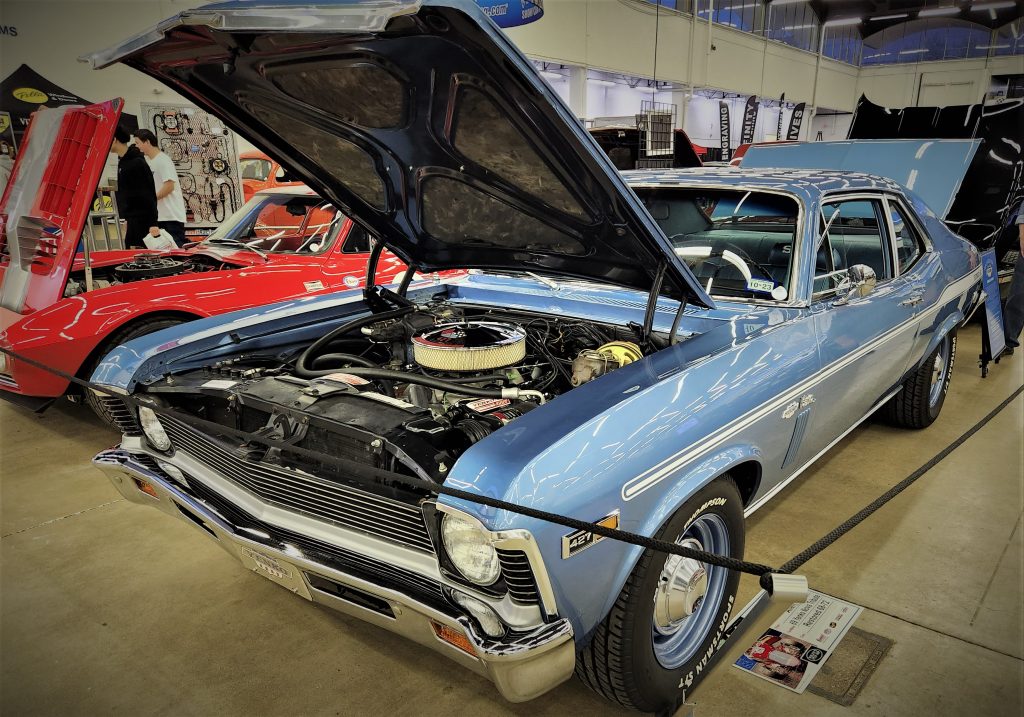
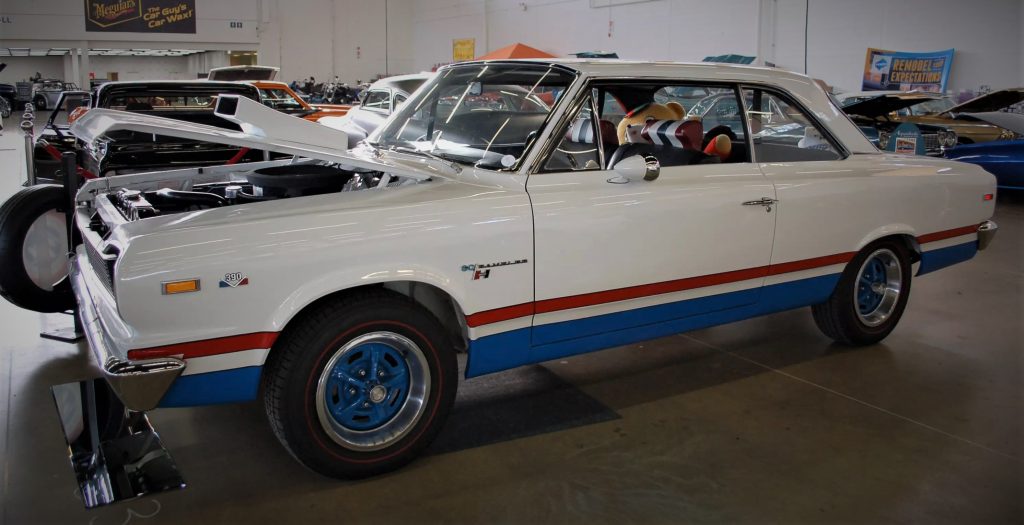
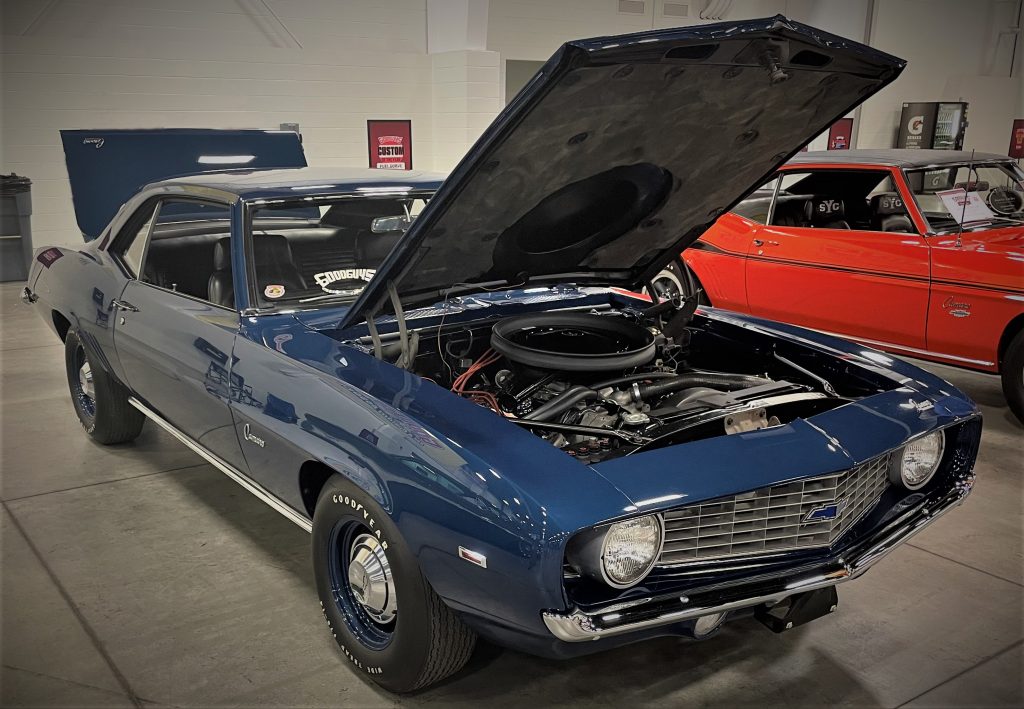
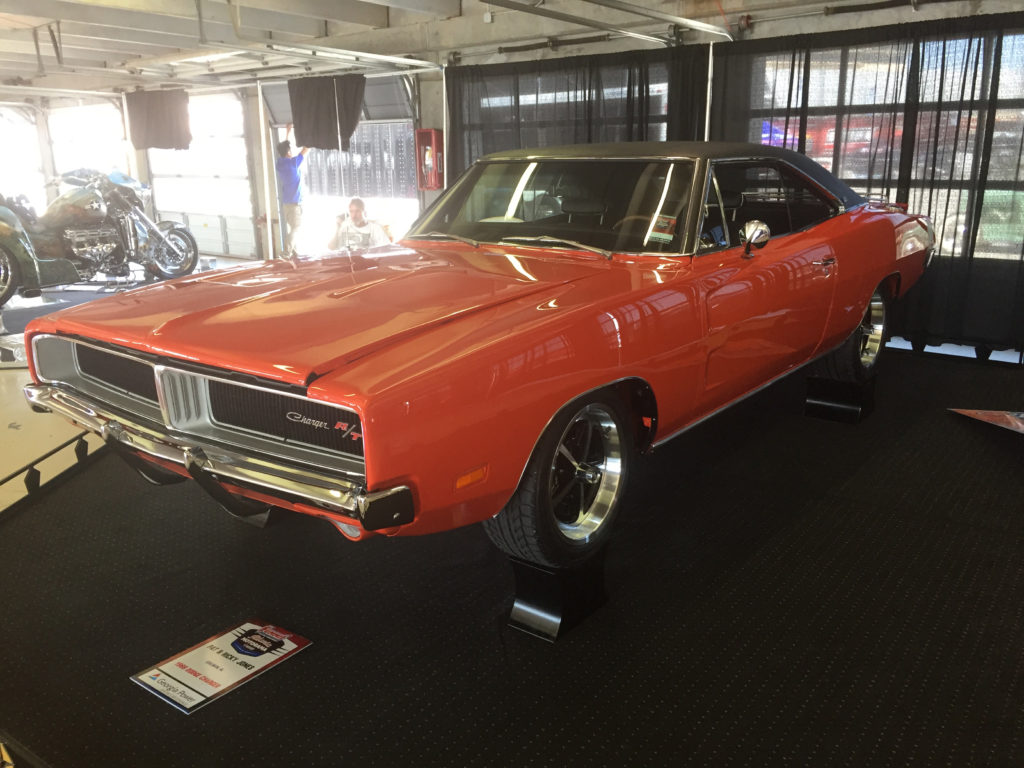
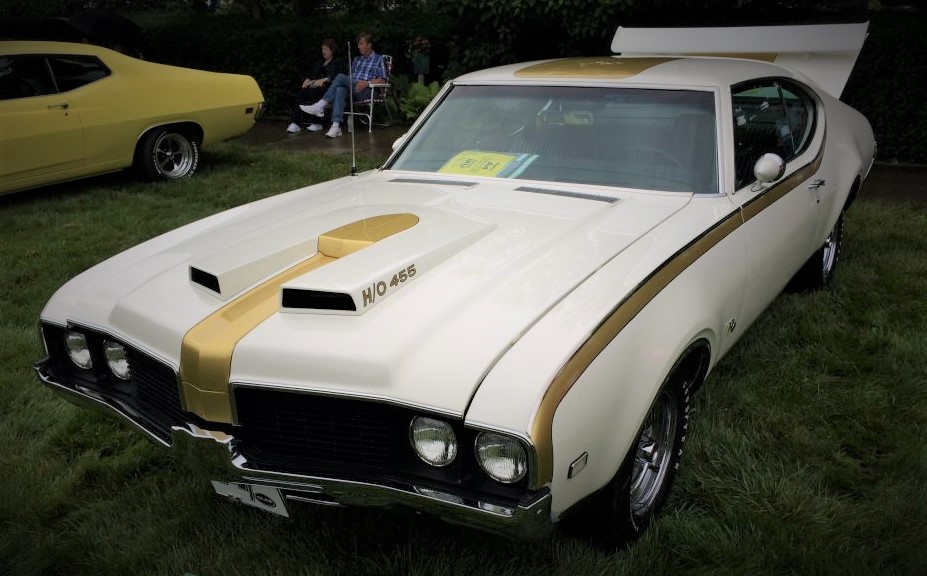
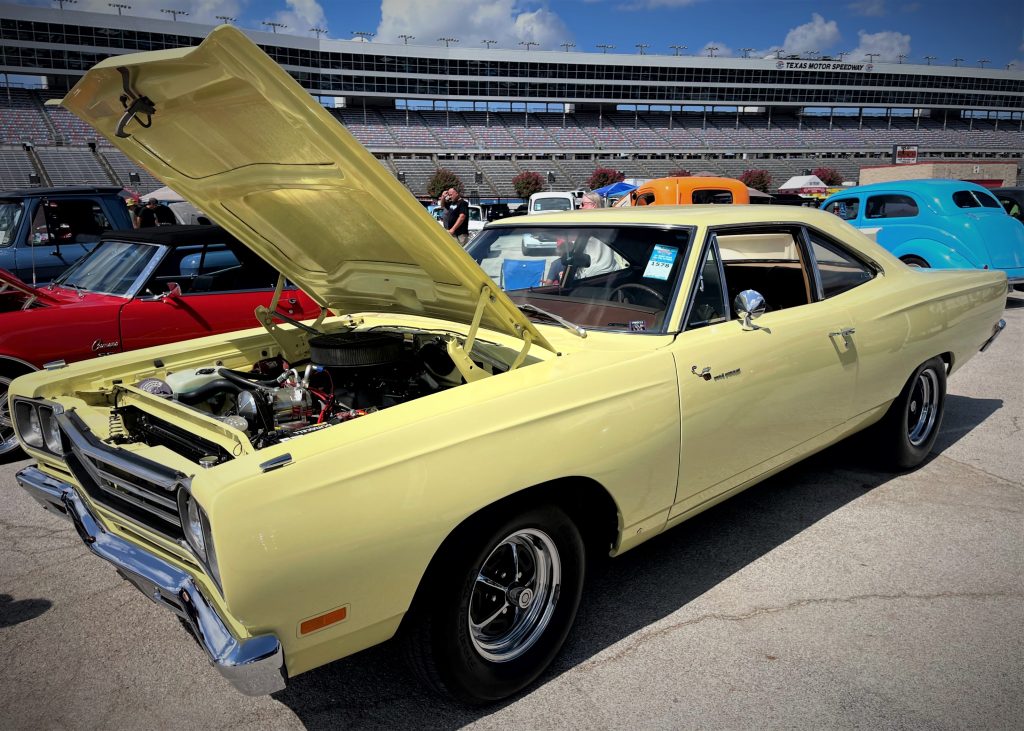
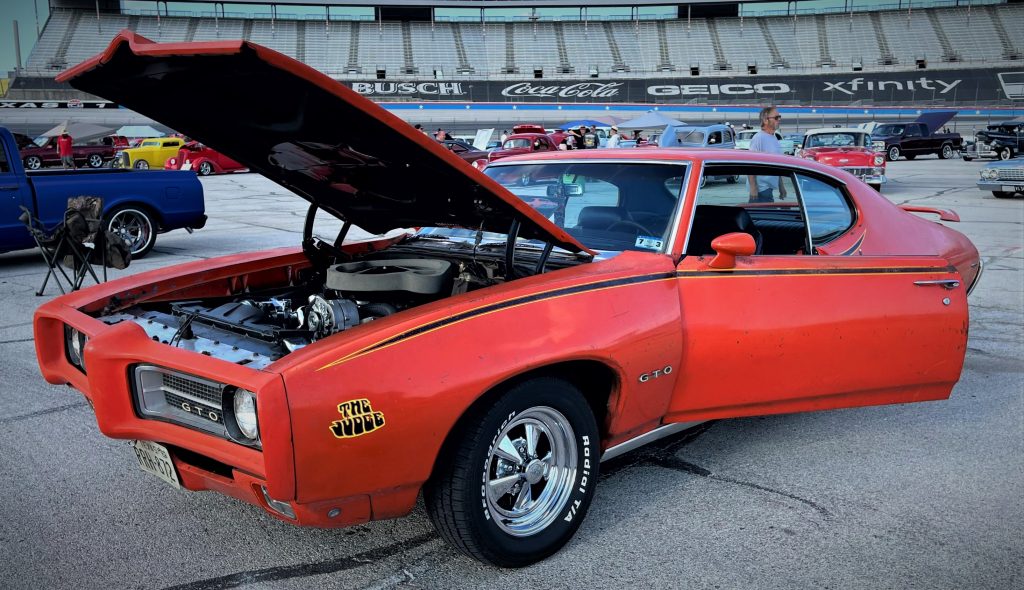
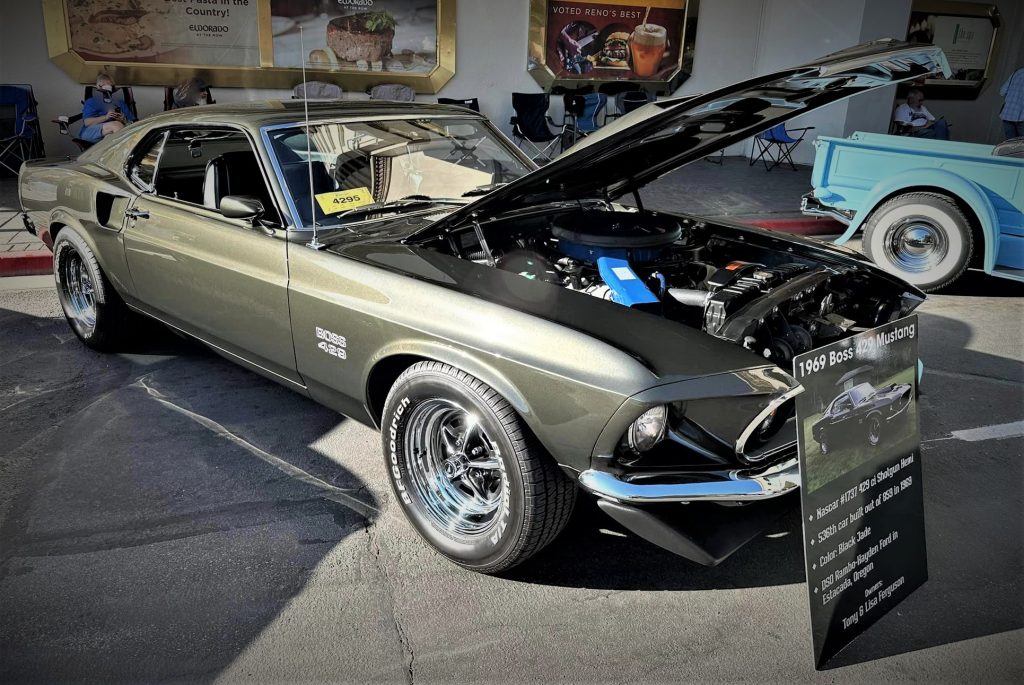
1969 AMC Hurst SC/Rambler. Rare, cod quick. Sweet looking ride Aldo!
I’ve owned two of these since 1970 1st was a used car with 12,000 that I bought for $1800.00 and kept (or what was left of it ) until 1986 when I bought a restored one that i still have for $6500.00. And all I an say is I wish I still had the first car because the restored second one is just a dog. My first SC/Rambler ran consistent low 13’s with a one time best pass of 12:97 at 104 MPH on a cool night at Englishtown
Boss 429
1969 AMC SC/Rambler better then all them heavy bigger cars.
Mustang Boss 429
SC/Rambler all the way!
1969 big in neet racing machines,and but got go with the Copo Camaro
1969 Chevelle SS 396
Boss 429
The BOSS 429,is the KING of this line up and THE BEST Mustang ever!
S/C Rambler ! Have to love the underdog that could !
1969 AMC Hurst SC/Rambler hands down, plus I got one!
1969 Oldsmobile Hurst/Olds 455
The BOSS 9′. Of this list of cars None; except one,are still made today and that one was shelved by GM and brought back…. Mustang King of All Muscle Cars.
My choices are narrowed down to the Charger R/T – with standard 375 horse 440, Road Runner – with standard 330 horse 383, and GTO “The Judge” – with WAY underrated 366 horse RA III 400. All the others had to go to outside contractors or off-line for completion, ie; were NOT standard production. I would go with the Pontiac mostly because of it being a bit lighter and tighter. But I wouldn’t have turned down the Charger if offered to me!
1969 AMC Hurst SC/Rambler. Wasn’t even a big block and could still hang with the big dogs. Also at $2998 it was the most performance for each dollar you could buy, maybe ever. Plus it out looks them all with the graphics! What’s more American than an American Motors Rambler American draped in Betsy Ross’s flag?
Being a former owner of an SC/Rambler and having friends with a few of the others,,,I can tell you that whenever we got together,, the car that attracted the MOST attention,, and was the MOST fun to drive,, was the SC/Rambler!!
Not the fastest, or with the most HP, or the best handling. BUT,,if you want the most unique appearing and FUN to drive & show,, it was the RAMBLER,,, hands down!!!!
Since being a standard production vehicle was NOT a requirement, the high degree of engineering that went into the 1969 Boss 429 Mustang would put it at the top of the list. To say it is the best Classic Mustang ever would be a little too optimistic.
The regular production line 1971 Boss 351 Mustang was typically quicker in the quarter mile and the solid lifter 351 Cleveland engine was lighter which provided better balance for good overall handling.
And the beat goes on….
SC/Rambler
I believe you went down the wrong road with the choices. There are 2 best cars of 1969 and they are the two small block cars called Z28 and Boss 302! These cars were affordable and available to a greater number of people than any of the choices listed. Both of these cars raced in many venues, not only 1/8, 1/4 mile drag race. The cool thing about these cars is they are still racing today and are being enjoyed by participants and spectators alike.
Ford Boss 429 Mustang.
I wish I still had mine! Was quite a car. I bought it used in 1973 for $2500 – a barn find, literally.
Hindsight is 20/15 or better, eh?
Continuing from above…
Oh, and my 1969 had the “S” 429 with the 1/2″ connecting rod bolts. Even the front wheel hubs were different on this vehicle – different from almost every other Ford made. I had the green just like the photo above.
Sc/Rambler is crazy fun to drive if ya drove one ya wouldn’t understand still have mine 45 years now
Boss 9 all day!
Boss 429.
1968 396 chevelle
Hurst SC/Rambler. One of very few genuine Hurst cars.
1969 AMC SC/Rambler Best little big car.
Since you used the photo of my car from February 2015 Hemmings Muscle Machines I must vote for the SC/Rambler. It was selected as Muscle Machine of the year in 2015. I beat most of the other cars on this list racing on the streets around Phoenix.
Charger all the way as it wasn’t some special edition dealer build and I’m very biased having owned 1 for half it’s life.
Boss 429 gets my vote but a very impressive field.
I’ve been around all of these beauties. 1969 was the height of Muscle Car Wars.They all have there “Pro’s & Con’s” But in my experience MOPAR was the ultimate Muscle Car.
When I was in high school(1975) the Hot-Rod Craze was full bloom Nova’s with 396’s Chevelle’s with 454’s,Torino’s with 429’s, a friend and I actually put a 472 Cadillac engine into a Gremlin. Talk about insane! 400 horsepower caddy engine. One night he called me, he had won a car in drag racing, need me to drive it back to the shop. Well when I got there it turned out to be a 1969 Plymouth GTX(obviously the owner couldn’t drive) 69 GTX,440/6PACK/4speed.
This was the car that was sold from the dealership with a “Warning Label”on the driver’s door window.
At that time I was a devout Chevy man, after my experience with that Car I went full MOPAR.
The most powerful production Car I have ever driven, I often wondered, what kind of Parents would buy their child a vehicle like this? DEATHWISH?Seriously this machine was a Monster.
a man after my own heart I test drove a 383 dart
too slippery on dry roads bought a 340 4 sp still own it
69 BOSS 429 Stang
S/C all the way
I vote for a 1969 AMX SS , IT WON CLASS CHAMPIONSHIPS , forgotten superstar !
Hurst SC/Rambler! As a Javelin owner, gotta go with it!
69 charger………. I had the R/T went 140mph with 5 guys in it with no problem wonder iam still around or the guys dumb enought to ride with me
The SC/Rambler for sure. Great car!
AMC Sc/Rambler!
Definitely the GTO Judge.
SC Rambler for the win!
!969 AMC SC/Rambler……..
Since you don’t have the 1969 cougar my mama had…390 engine wow! Sooooo Rambler all the way! yes yes yes!
Rambler all the way since you don’t have the 1969 cougar my mama had! 390 engine wow! Sooooo Rambler yes yes yes!
Since you don’t have the 1969 cougar my mama had…390 engine wow! Sooooo Rambler all the way! yes yes yes!
Amanda you do realize the Ford (Cougar) 390 is NOT even the same as, NOR is it even related to the AMC (Rambler) 390. Two TOTALLY DIFFERENT engines and two TOTTALLY DIFFERENT, NOT related car manufacturers/companies.
Rambler is winner!
S/C Rambler for sure!
1969 Rambler!
SC/Rambler
1969 Rambler
S/C Rambler
S/C RAMBLER all the way!!!!
Rambler‼️
69 Boss 429
69 BOSS 429
The Boss 429 !
The BOSS.
The BOSS. All the others are just transportation.
Boss 429
1969 Boss 429
1969 AMC Hurst SC/Rambler
Love ❤️ the Rambler!!
Boss 429
Boss 429.
Boss 429 Mustang.
Boss 9
Boss 429
Boss 9
Boss 429 Mustang all the way…
Boss fu sure
Boss
The 1970 Boss 302 was the fastest street car
Boss 29
1969 AMCHurst SC/Rambler
Boss 9 of course !
I know its cliche, and I’m going to get a lot of flack for this answer, but it is the best answer to the proposal:
1969 COPO Camaro ZL1
If you don’t agree, that’s ok, but you’re wrong… Just step back from biases, loyalties, and fond memories for a moment and think about this:
An all-aluminum 427 cid V-8 engine with solid lifters, high compression and a Holley carburetor.
Ill bet that to this day many who are responding have never even driven a car with an all-aluminum V8. I certainly never had the opportunity to drive one of these from 1969, but I can assure you that all aluminum V8s rule. Just look at todays hugely powerful and fast offerings. WOW. I drive a 2009 ZR1 Corvette daily and I thank God every time I get in the thing.
I admit to being a Chevy guy, but I swear that does not infect my response. There was just nothing else available in a 20 or 30? year span either direction like the 1969 COPO Camaro.
Have a nice day.
I totally agree with you it is the best muscle car ever .
If you want something different, I can suggest an Aussie GM Muscle Car. The HT 350 Chev. GTS Bathurst Monaro which one our greatest race with a 1,2 Finish. GM even didn’t expect it to win. It was the genuine standard road going car, up against special GTHO Ford sedans and Chrysler Pacers. It took Ford Totally by Surprise.
Hurst SC/RAMBLER, l sold these as a young American Motors salesman and I owned and raced a 68 Javelin. I raced a couple of my customers SC/RAMBLERS for them and with a good set if tires they were easily a high 13 second car, plus the were a ball to drive.
,
Absolutely 1969 SC/Rambler.
I’ve always had a place in my heart for Nash/AMC products. My first car was a ’53 Nash Ambassador, big 6 and 3 on the tree. It had no top end, but a mean first gear. I loved to take guys in their fancy V8s off the line in downtown, stoplight to stoplight drag races. I later owned one of my favorites, a ’69 AMX, and after that, a souped-up,black with gold stripes Hornet. I never had a ’69 SC/Rambler, but that’s gotta be my vote.
It was and still is the C.O.T.Y., the Road Runner brought everything together to make the perfect muscle car. BEEP BEEP!
Here come the Judge
Boss 9
69 Roadrunner was sex and violence on wheels. It doesnt get any better than that.
[…] Our friends at Summit Racing and we at OnAllCylinders were commemorating the 50th anniversary of this legendary year in American automotive history when we asked you to vote for your favorite. […]
1969 Chevelle SS 396!!!
Has more and better body lines both front and rear than the ’70. And a refined interior from 1968 with a better dash than the ’70. In my opinion….
They all get a vote from me, including the Aussie examples. Truth is, there is an awful lot of great cars missing from this list
In 1970 I drove a Mach 1 428CJ. Honestly, I’ve never seen a Boss 429 on the road. Every version of the Corvette, Charger, Cuda, Chevelle I probably saw or raced against.
The 3 greatest cars ever in my books was
#3 ’71 440 Cuda (0-60@5.1 sec)
#2 ’69 Boss 429 (0-60@5.0 sec)
#1 ‘427 Shelby Cobra (0-60@3.7 sec)
* all times provided by http://www.automobilecatalog.com
None! the best looking cars of 1969 are the Corvette Stingray and Lincoln Mark III. But that Boss, though!
There is only one boss!
Yes I love the 69 Boss 429 ! , such a great looking car as well as hung !